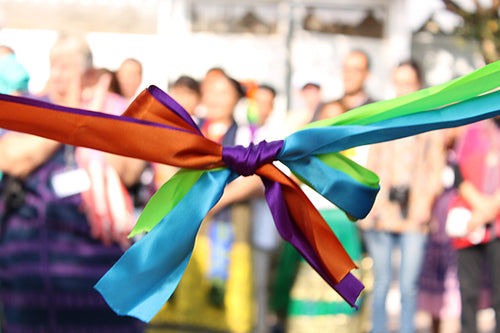
José Pedro Rosas Juárez, Puebla, Puebla
José Pedro Rosas Juárez lives and works in Puebla, Mexico where his family has made talavera pottery for generations.
The word talavera comes from the town Talavera de la Reina, Spain, known for its Spanish/Arabic pottery. Talavera pottery began its Mexican life in the city of Puebla. Some say that talavera is not "genuine" if it does not come from Puebla.
The potter's guild of Puebla, formed in the 16th Century, was bound by rules that all talavera-producing workshops had to follow. Some of these rules are still in effect in the remaining 16 workshops certified to produce Puebla talavera:
- Each master potter must sign or mark his/her products
- Each piece must be identified as being produced in Puebla
- There must be a certification number on each piece
- Each workshop must pass a semi-annual examination and verification process to ensure the best quality and authenticity.
According to some experts, pottery is the simplest but also the most complicated of all the arts. It is the simplest because it is the most elemental: it comes from the earth. It is the most complicated because it is the most abstract: it comes from the soul.
It is believed that 16th Century Spanish Dominican monks taught the technique to the indigenous people of Puebla. The Indian people were already accomplished potters and readily adopted this new process to produce the designs and glazes from the samples provided by the monks.
As the popularity of the pottery increased, talavera production spread from Puebla to the town of Dolores Hidalgo, Guanajuato. There is controversy and confusion about the pottery produced outside Puebla. The average shopper, unaware of the noble history of talavera and the rules governing its production, considers that all Mexican-made talavera pottery is created equal. The potters of Puebla firmly say, "No." They intimate that the tin-glaze majolica pottery produced in Dolores Hidalgo is of substantially inferior quality and artistic style and must not be called talavera.
The process of manufacture starts with the selection of two types of clay. These clays are washed, cleaned, mixed, kneaded, and then allowed to air dry to a consistency that allows shaping either by hand, on a potter's wheel or in a mold to form the desired shapes. The pieces are then air dried for several weeks before the first firing in a kiln at around 1500 degrees Fahrenheit.
The next step is the decoration and glaze. The pottery pieces are hand painted and decorated to obtain the desired colors and patterns, using only six traditional mineral pigments: blue, green, yellow, red, brown and black. By combining these colors different tones of blue are achieved as well as orange and purple. The pigments must be made at the workshop following long-established formulas. Ultimately, the pottery pieces are subjected to a final firing at around 1900 degrees Fahrenheit.
- Talavera Rosas
- Puebla, Puebla
- 222 493 4263
- talavera.rosas01@gmail.com

